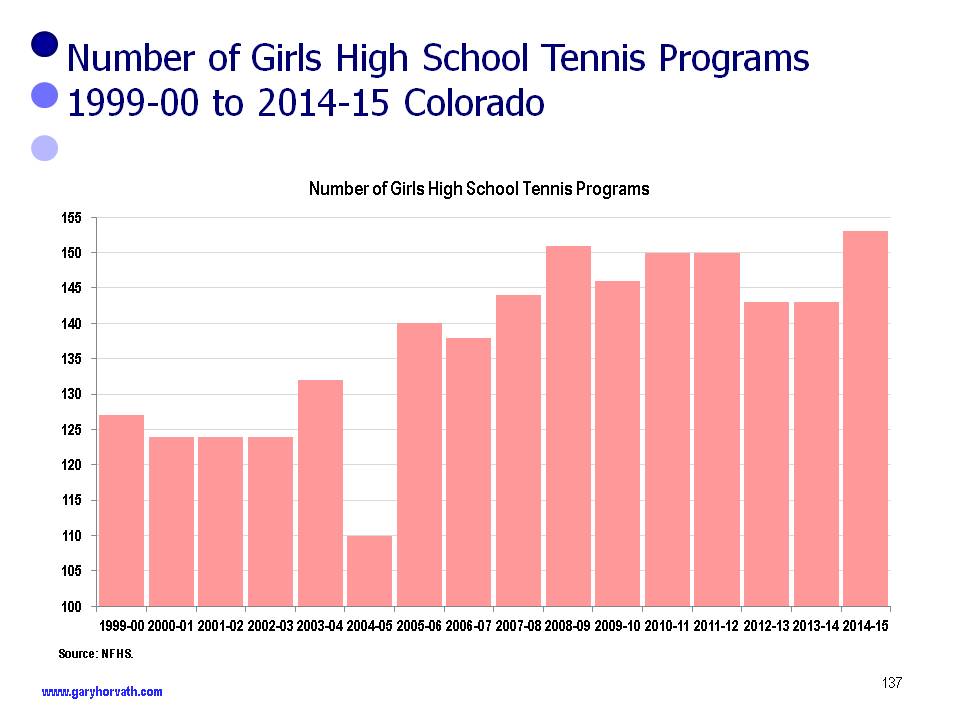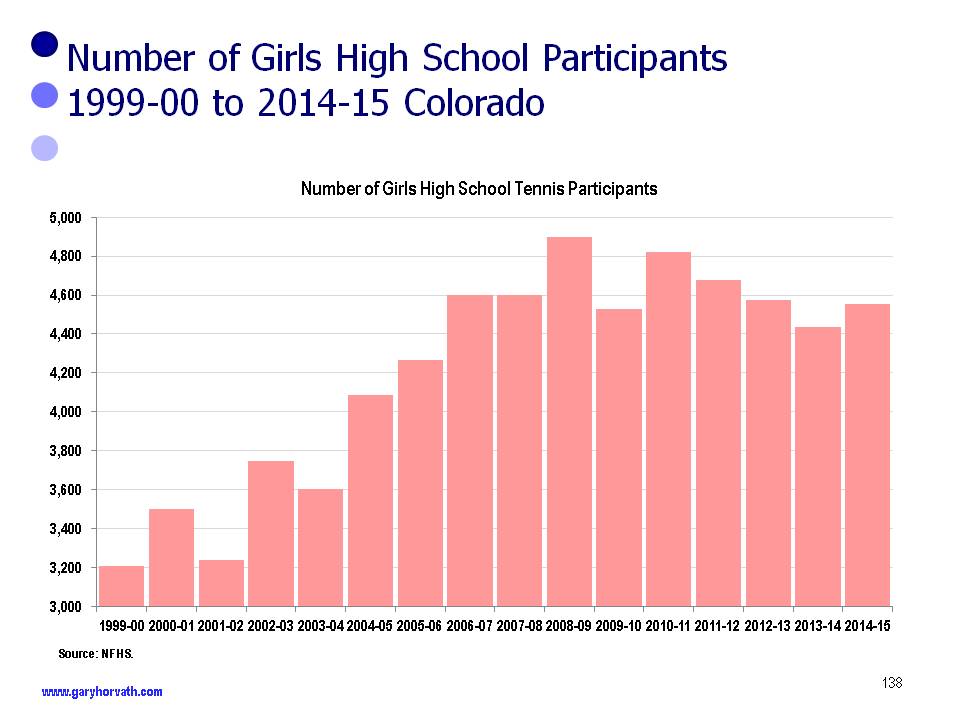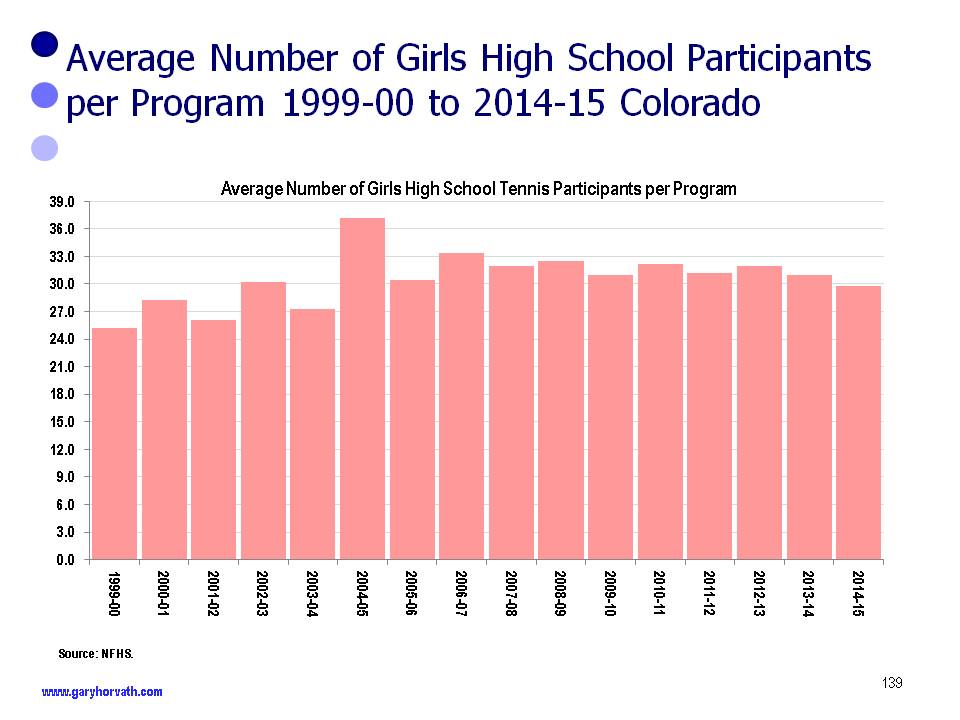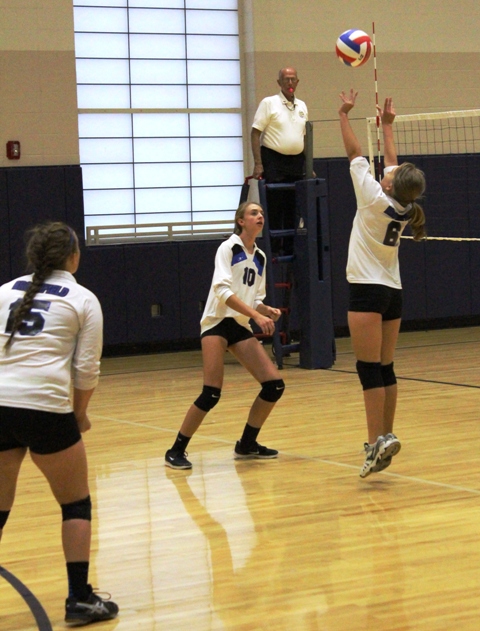Between the 1999/2000 and 2014/2015 academic years the number of Colorado girls high school tennis programs in Colorado ranged from 110 to 153, with the peak coming in 2014/2015. This increase comes after declines in the two previous seasons. The range of the number of boys and girls programs was similar during these 15 years.
For this period, there has been a wide range of participation in girls programs. Interestingly, there is a solid correlation between the number of girls programs and the number of participants. That was not the case with the boys tennis. Over this period the annualized rate of growth in participation is 2.4%.
At its peak in 2008/2009, there were 4,901 participants. The number of participants has since trended downwards, for no obvious reason.
The lowest number of participants during this period occurred in 1999/2000.
Between 1999 and 2015 the Colorado population increased by from 4.2 million to 5.4 million. This is a gain of 1.2 million people, at an annualized rate of 1.7%.
The number of females between the ages of 15 and 19 increased from 144,081 in 1999 to 176,661 in 2015. This is a gain of 32,580, at an annualized rate of 1.4%. It appears that girls tennis is growing at a much higher rate than the population of females in the 15-19 year range.
Over the past three years the average number of players per program has been about 30 students.
There are a number of factors that are a challenge to girls high school tennis in Colorado such as the lack of quality coaches and adequate funding and facilities. Nationally, tennis is growing at an annualized rate less than the rate of growth in the U.S. population, (less than 1.0%). Probably the biggest challenge is that girls tennis in Colorado is a spring sport and the weather in the spring is often windy, cold, and wet.
On the other hand, many girls participate in programs because the season is short, most players are recreation level players, and many programs emphasize the social aspect of the sport.
Colorado girls tennis has a strong foundation and should continue to grow.
Source: NFHS.





